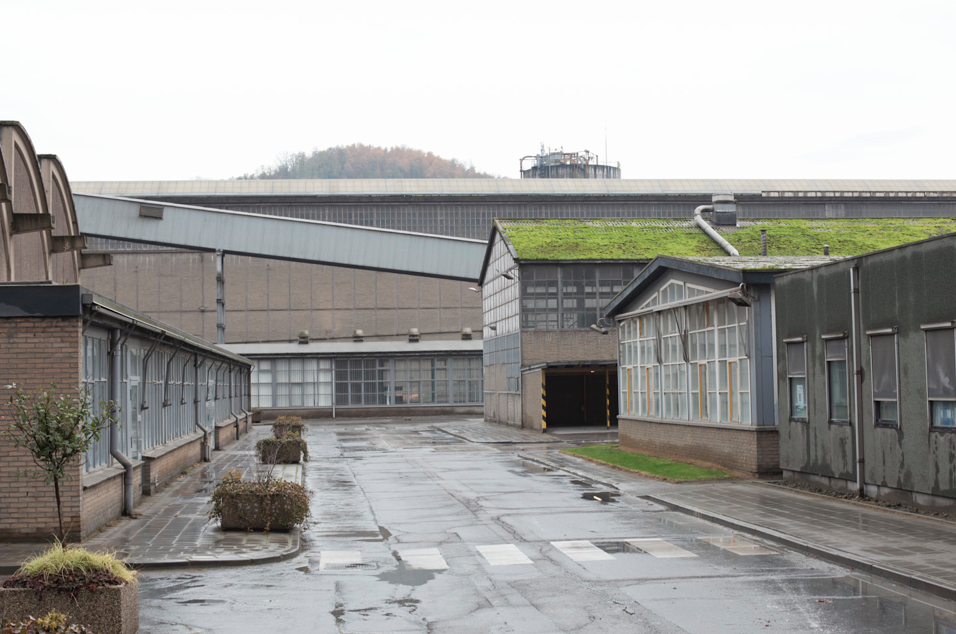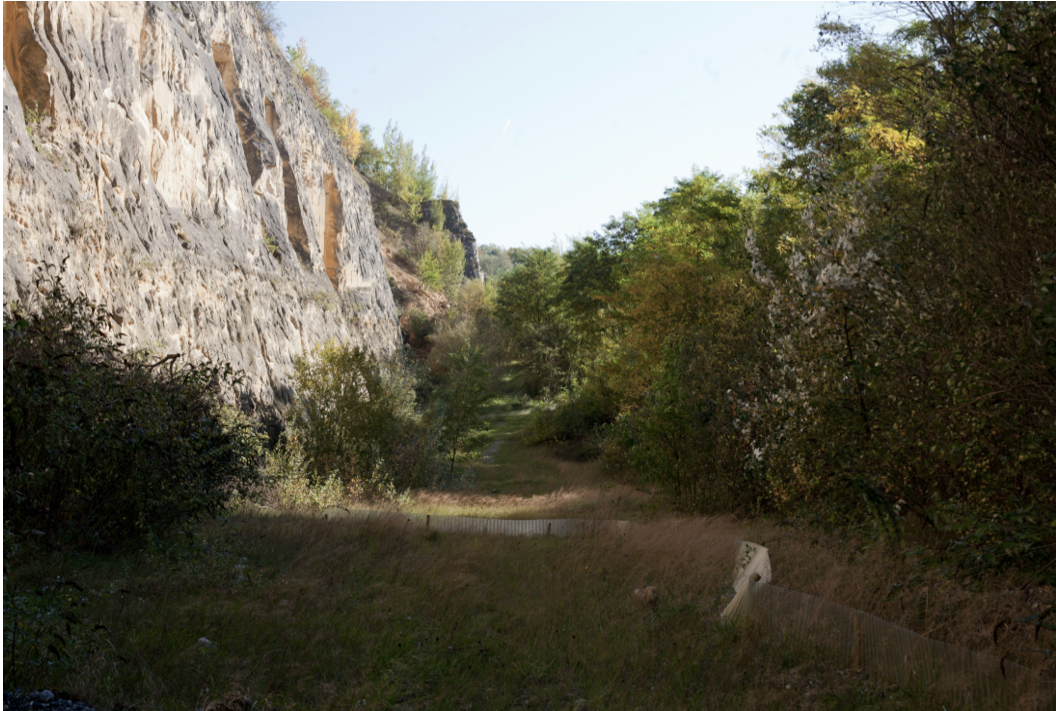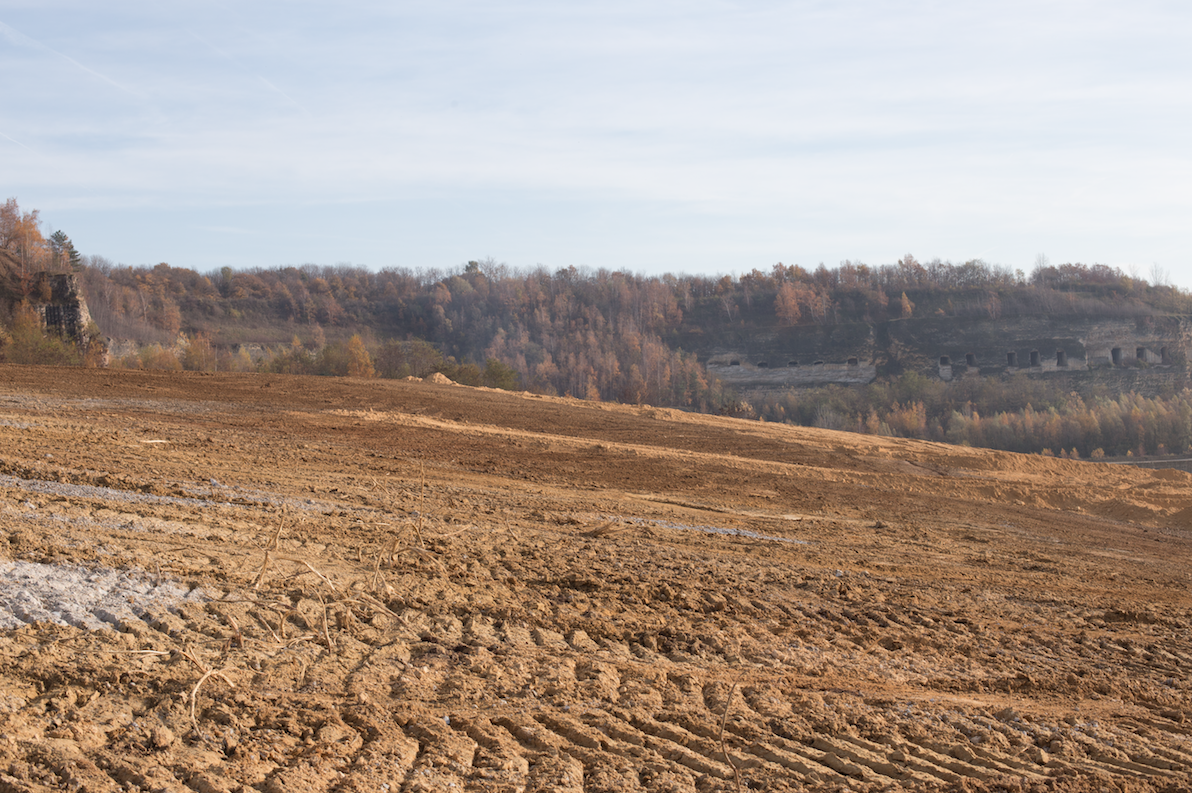The transformation of a soon to be left quarry, Maastricht (2014)
Right next to Maastricht, a city in the south of the Netherlands, lies Mount Saint Peter. A small hill which highest point measures 165 meters above sea level. The lowest point of the town is also located here: 65 meters beneath sea-level. This is the bottom of the infamous ENCI-quarry.
Between these two heights 65 million years of history can be found. But the last century might be the cultural highlight of the place.
When the First Dutch Cement Industry came to town in 1926, this meant a huge economical progression and a lot of jobs for the inhabitants. Plus, the use of chalkstone is characteristic for the architecture of South Limburg. But everything has a seamside; the deeper the ENCI dug, the fairer the protest against the firm. Smoke nuisance, destroying the largest underground tunnel-system of Europe, and lastly, destroying a big part of nature on one of the highest places in The Netherlands.
Over the past few years the proceedings have been cut back, albeit slowly. The final date of the exploitation has been set: 2018. After this, the only things which will be dug for are fossils and other geological treasures.
With this date in mind we might be able to take a new look at the area. Without romanticising exploitation, I think we can say a new sublime landscape has been created.
* Made in cooperation with Stichting Onwikkelingsmaatschappij Enci-gebied, October – December 2014. The project was exhibited in AINSI, Maastricht, February – March 2015.
Between these two heights 65 million years of history can be found. But the last century might be the cultural highlight of the place.
When the First Dutch Cement Industry came to town in 1926, this meant a huge economical progression and a lot of jobs for the inhabitants. Plus, the use of chalkstone is characteristic for the architecture of South Limburg. But everything has a seamside; the deeper the ENCI dug, the fairer the protest against the firm. Smoke nuisance, destroying the largest underground tunnel-system of Europe, and lastly, destroying a big part of nature on one of the highest places in The Netherlands.
Over the past few years the proceedings have been cut back, albeit slowly. The final date of the exploitation has been set: 2018. After this, the only things which will be dug for are fossils and other geological treasures.
With this date in mind we might be able to take a new look at the area. Without romanticising exploitation, I think we can say a new sublime landscape has been created.
* Made in cooperation with Stichting Onwikkelingsmaatschappij Enci-gebied, October – December 2014. The project was exhibited in AINSI, Maastricht, February – March 2015.











